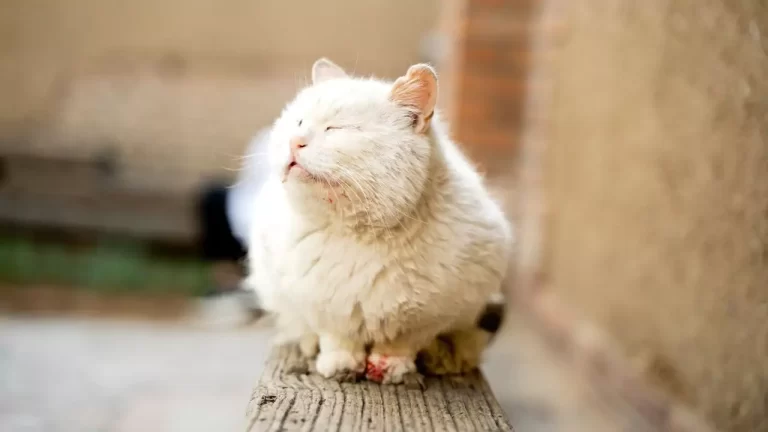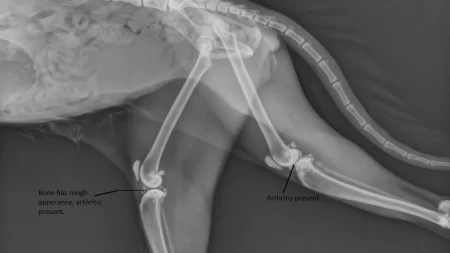No, cats do not bleed during periods. Unlike humans, female cats do not have menstrual cycles that involve shedding the lining of the uterus and bleeding.
Instead, they have estrus cycles, also known as heat cycles, that prepare them for mating and reproduction.
In this article, we will explain the reproductive cycle of female cats, why they do not bleed during heat cycles, and how to manage heat cycles in female cats.
The Reproductive Cycle of Female Cats
Estrus Cycle
Female cats reach sexual maturity at around six months of age, but this can vary depending on the breed, season, and environment. When they are ready to breed, they enter the estrus cycle, which is a series of hormonal changes that make them receptive to mating. The estrus cycle can last from a few days to a few weeks, depending on whether the cat mates or not. Cats are induced ovulators, which means that they only release eggs from their ovaries when they mate with a male cat. If they do not mate, they will go out of heat for a short period and then enter another estrus cycle. This can happen several times a year, especially during the spring and summer months when the daylight hours are longer.
Signs of Being in Heat
Female cats in heat exhibit various signs that indicate their readiness to mate. These include:
- Increased vocalization: Cats in heat may meow, yowl, or howl more than usual to attract potential mates. They may also respond to any sounds or movements around them.
- Increased affection: Cats in heat may rub against people, furniture, or other objects to spread their scent and mark their territory. They may also seek more attention and petting from their owners or other cats.
- Rolling on the floor: Cats in heat may roll on the floor or show their belly as a sign of submission and an invitation to mate. They may also lick their genitals more frequently to keep them clean and moist.
- Raising the hindquarters: Cats in heat may raise their hindquarters and move their tail to the side when they are stroked along the back or spine. This is called the lordosis posture and it exposes their vulva for mating.
- Urine spraying or marking: Cats in heat may spray urine on vertical surfaces or mark their territory with urine or feces. This is a way of signaling their fertility and availability to other cats.
Differences from Human Menstruation
Unlike human menstruation, which involves bleeding from the vagina due to the shedding of the uterine lining, cat estrus does not involve any bleeding or discharge from the vulva. This is because cats do not shed their uterine lining during their estrus cycle. Instead, they reabsorb it into their body if they do not get pregnant. Therefore, there is no need for cats to bleed during periods.
No Bleeding During Heat Cycles
Explanation from Veterinary Experts
According to veterinary experts, cats do not bleed during heat cycles because they have a different reproductive system than humans. Humans have spontaneous ovulation, which means that they release eggs from their ovaries at regular intervals regardless of mating. This requires a thickening of the uterine lining to prepare for a possible pregnancy. If no pregnancy occurs, the uterine lining is shed as menstrual blood.
Cats have induced ovulation, which means that they only release eggs from their ovaries when they mate with a male cat. This reduces the need for a thickening of the uterine lining and prevents wastage of resources. If no mating occurs, the uterine lining is reabsorbed into the body without any bleeding.
Hormonal Surges and Behavioral Changes
Although cats do not bleed during heat cycles, they still experience hormonal surges and behavioral changes that affect their mood and health. The main hormone involved in cat estrus is estrogen, which stimulates the development of follicles in the ovaries and increases sexual receptivity. Estrogen also affects other aspects of cat physiology and behavior, such as appetite, metabolism, stress response, aggression, and vocalization.
The high levels of estrogen in cats in heat can cause some problems if they are not spayed or mated. For example, prolonged exposure to estrogen can increase the risk of developing mammary tumors or pyometra (a life-threatening infection of the uterus). Moreover, repeated estrus cycles can cause stress and frustration in cats who are unable to mate or find a suitable partner.
Managing Heat Cycles in Female Cats
Spaying as a Solution
The best way to manage heat cycles in female cats is to spay them before they reach sexual maturity. Spaying is a surgical procedure that removes the ovaries and uterus of a female cat, preventing her from going into heat or getting pregnant. Spaying can be done as early as eight weeks of age, but it is usually recommended to wait until six months of age or after the first estrus cycle.
Benefits of Spaying
Spaying has many benefits for female cats and their owners. Some of the benefits are:
- It eliminates the risk of ovarian and uterine cancers, which are common in intact female cats.
- It reduces the risk of mammary tumors, which are the most common type of cancer in female cats. Spaying before the first heat cycle can reduce the risk by 91%.
- It prevents pyometra, a potentially fatal infection of the uterus that affects up to 25% of intact female cats.
- It reduces unwanted behaviors associated with heat cycles, such as vocalization, spraying, roaming, and aggression.
- It reduces the number of unwanted kittens that contribute to the overpopulation and euthanasia of cats in shelters.
- It saves money and time on veterinary bills, cat food, litter, and other expenses related to caring for a pregnant cat or a litter of kittens.
Preventing Unwanted Pregnancies
If spaying is not an option for some reason, it is important to prevent unwanted pregnancies in female cats. This can be done by keeping them indoors and away from male cats during their heat cycles. Alternatively, some hormonal contraceptives can be used to suppress heat cycles in female cats, but they have some side effects and risks that should be discussed with a veterinarian before use.







